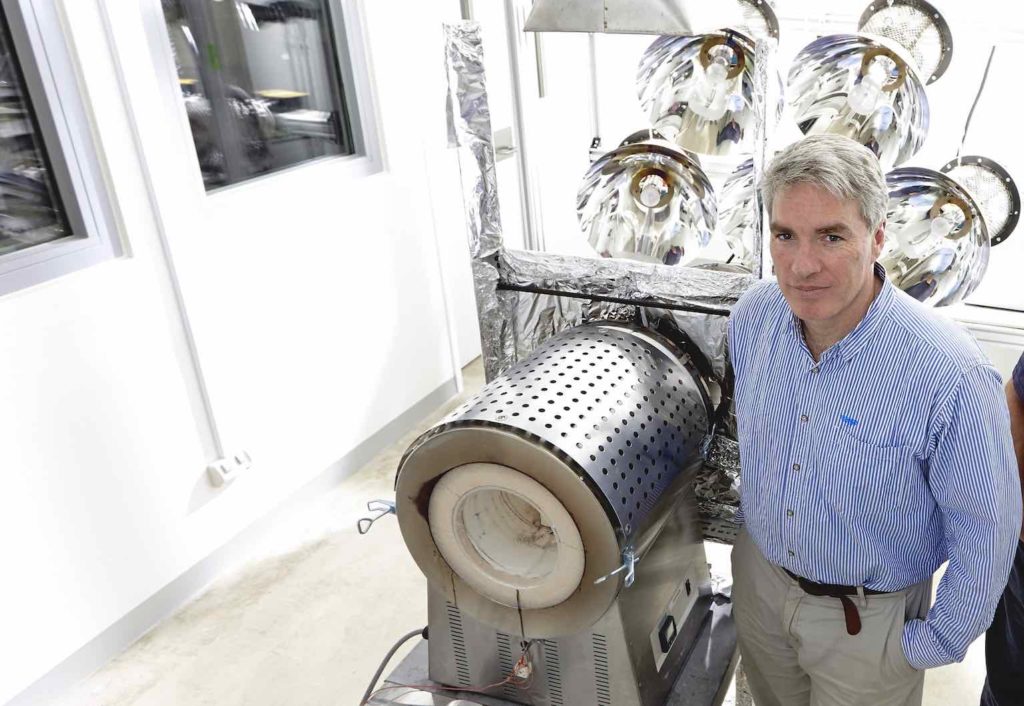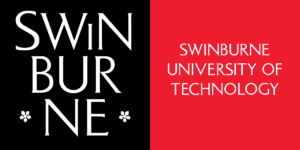From moon dust to cosmic rays, lunar explorers will need to overcome huge challenges. A team at Swinburne University is harnessing technology to solve them.
If you think sending an obligatory Christmas gift to a distant relative overseas is painfully expensive, take note of the postage to the moon. The cost of “space-shipping” goods to the moon is $35,000 per kilo.
It’s no wonder that Swinburne University researchers interested in establishing more permanent habitats on the moon have begun seeking ways to build structures using only materials found in space, otherwise known as ‘In-Situ Resource Utilisation’ (ISRU).
Self-proclaimed ‘luna-tic’, Professor Geoff Brooks is leading the Swinburne research project in collaboration with the CSIRO.
Engineering meets astrophysics
Brooks has a love of space that began as a child who was in awe of his father’s work on NASA’s Apollo missions.
While Brooks pursued engineering rather than astrophysics, he said the moon provides the perfect environment to combine his expertise in materials production and solar thermal processing. Brooks, who holds a PhD in chemical engineering, has won several international awards for his contribution to metallurgical processing.
To conduct further space exploration, humans will need structures that shelter them from harmful cosmic rays and ‘moon dust’ that is like tiny pieces of glass.
“We will need buildings with thick walls to protect space explorers. However, on the moon we only have the rocks on the ground and the sun to work with. Everything else is difficult and expensive to get there,” Brooks explained.
“I’ve spent quite a bit of time studying solar thermal energy and how to process materials on the ground in Australia. However, on earth we have several alternatives for energy including wind power, natural gas and coal power. On the moon we don’t, so it’s the obvious place to apply this.”
Extreme terrain
Swinburne University is uniquely positioned to be able to conduct the research, drawing together a team of approximately 15 Swinburne academics and PhD students from mechanical engineering, mechatronics, product design and physics disciplines. Long term partnerships with the CSIRO access to experts who fortify the research team.
“When we got together and began thinking about how we could build structures using materials from the moon’s surface, a lot of science and engineering questions immediately came up,” Brooks said.
The team is not only faced with whether dirt and rock from the moon’s surface can be used to create building materials, but how those materials will be produced and how structures can be built under extreme weather conditions.
‘Site managers’ on the moon will be monitoring projects undertaken in conditions including temperatures from -180 to 120 degrees Celsius, cosmic rays, glass-like dust in the air, low gravity, vacuum-like low atmospheric pressure, and 14 days of continuous sunlight followed by 14 days of continuous darkness.
The conditions on the moon change the chemical behaviour of the materials.
“If you think about the way bricks are made, a bit like pottery, imagine trying to make pottery on the moon, where the perfect vacuum changes the way materials heat up and the shape that they take. These are the kinds of experiments we’re now building, to test not only how the materials will react on the moon but how we can work with those conditions to create a structure.”
One of the star components of the experiments is a Swinburne-developed solar simulator, using seven cinema lamps shining on one spot to create a temperature of 1500 degrees Celsius.
Dust and recycling
Abrasive dust is a big issue on the moon, especially for machinery. A top priority for Brooks’ team is how to manage the dust.
NASA itself does not yet have a solution to the problem. They are exploring treating it with water and equipping their machinery with protection but are hard at work looking for a solution before the next moon visit by astronauts scheduled for 2024.
Swinburne is experimenting with heating the material, to compact the dust via sintering.
The team is also looking at ways to harness and recycle space junk. Aluminium is commonly found floating around in space, so researchers are conceptualising ways to capture it and bring it back to the surface of the moon, where the natural heat provides ideal conditions for working with the metal.
Engineered for success
Engineering and science are well equipped to solve problems and Brooks is excited by the challenges the team faces.
“I’m so proud of our dedicated team and the different skills and passions they bring to the project. Being able to approach each problem with creativity and diverse perspectives pushes our ideas into new realms.
“This is truly a golden era for engineers and scientists,” he said.
Interested in a career in Australia’s dynamic space science industry? To learn more about Swinburne’s Space Technology courses, click here.

